Addressing Columbia River Contaminants
Columbia River Basin
|
NEW ESRI StoryMaps: What's On Our Shelves & NWNL Song Library & No Water No Life ESRI |
Columbia River Basin
Dan Audet
U.S. Dept of Interior, Mgr. Lake Roosevelt & U.S. Upper Columbia Basin
Alison M. Jones
NWNL Director and Photographer
The Columbia River is grand, but also full of complex issues from pollutants, dams and floods to the glories of salmon migrations, ancient ice dams and tribal heritages. We greatly appreciate Dan Audet sharing with us his passion and commitment to ensuring this grand river “keeps rolling on” — full of salmon and healthy clean water.
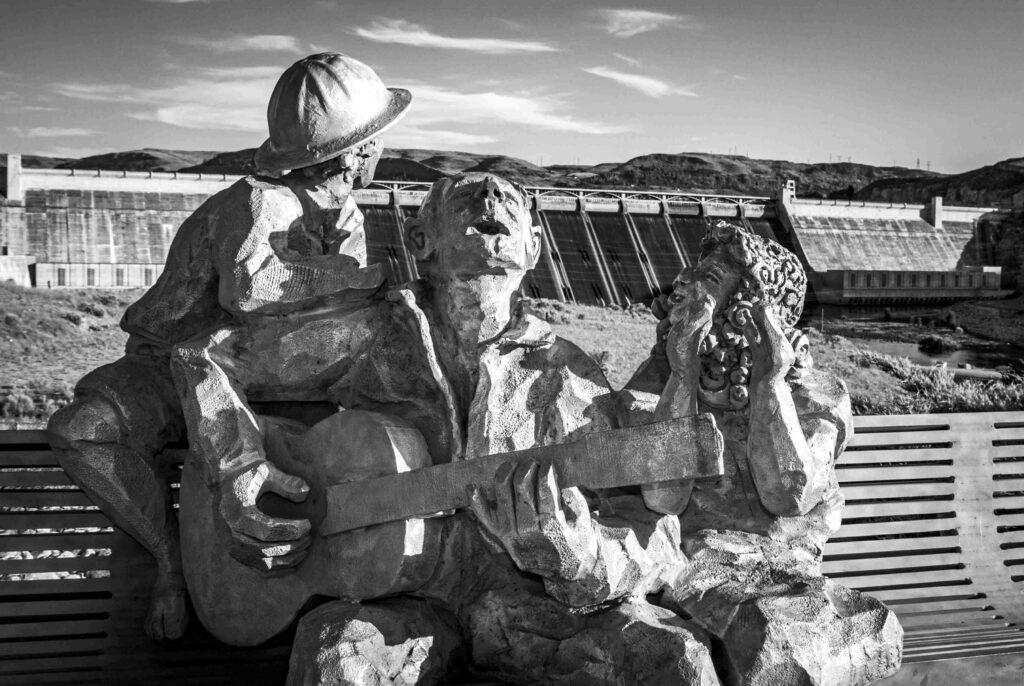
CROSSING the COLUMBIA from CANADA to USA
MIDNIGHT MINE & OTHER SUPERFUND SITES
TECK COMINCO’S LEGAL ISSUES
WATER QUALITY MANAGEMENT
THE GREAT MISSOULA FLOODS & SCABLANDS
BLACK ROCK PROJECT
PACIFIC SALMON
WATER QUALITY ADVISORIES
BALANCING THE IMPACTS OF DAMS
All images © Alison M. Jones, unless otherwise noted. All rights reserved.
NWNL Thank you, Dan, for your interest in my Columbia River Basin Expedition route! I came into Grand Coulee last night. Yesterday, I started with an interview with Teck Cominco in Canada, crossed into Washington for an interview on the Colville Reservation, and then left Kettle Falls to take Keller Ferry across Lake Roosevelt. I drove over a mountain road on the Colville Reserve, along Cash Creek Road and came through Colville Headquarters. Coming back down to the Columbia River, I entered town via South Coulee Dam Road.
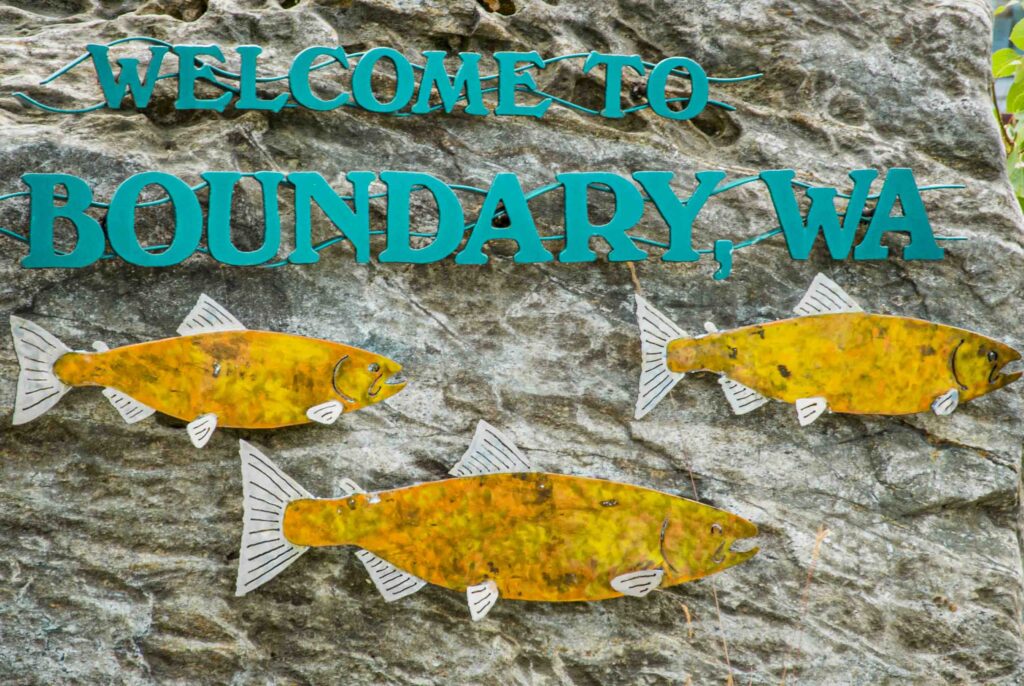
DAN AUDET And you’re headed down to Chief Joseph Dam today?
NWNL Yes. My itinerary today is to see the bald eagles and Coulee City first. I’ll go on to document the Chief Joseph Dam and finally the Okanagan River, another salmon river.
DAN AUDET You’ve got a busy day then.
NWNL Yes, like every day on this 6-week expedition!
Driving along Lake Roosevelt, I made a surprising detour I want to share with you, Dan. I stayed at The White Willow Motel, south of Fruitland. It’s been for sale for 8 years; and I am maybe the first person to stay in the last 8 years! The owner asked why I was there, so I told him about No Water No Life. He asked if I was taking water samples. After I said “No,” he shared a strange story.
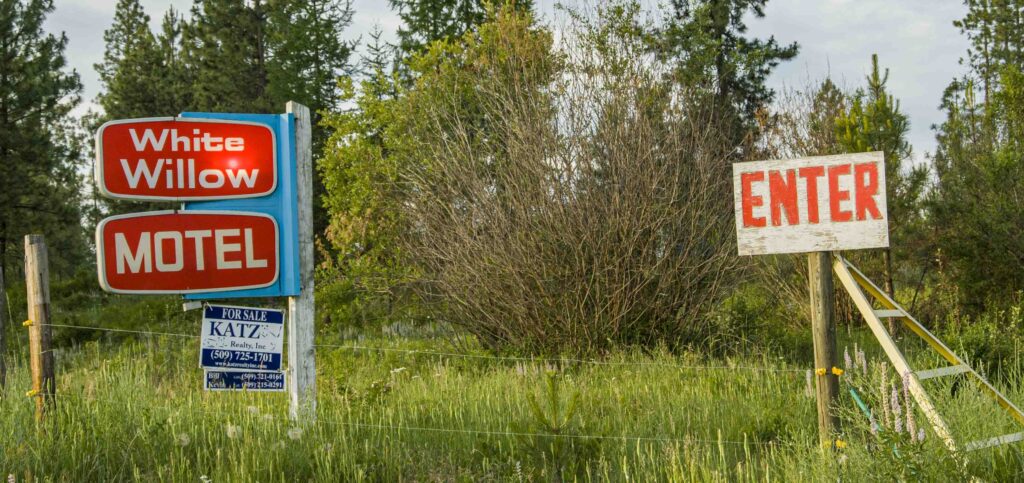
That motel owner told me that 5 or 6 years ago, about 20 guys arrived from Washington, D.C. to spend a month. They wouldn’t talk about what they did, but they’d come back every day with water samples. He shared his concern with them concerning restrictions for eating local whitefish and asked them, “Would you eat whitefish here? Are these restrictions really necessary?” The guy from DC answered, “I wouldn’t eat one fish egg from this water.”
When the motel owner asked why they were there, they said they were checking out the Midnight Mine and the Western Nuclear Mine. The motel owner thought those sites had been closed for 20 years, so he asked if they would become a Superfund cleanup.
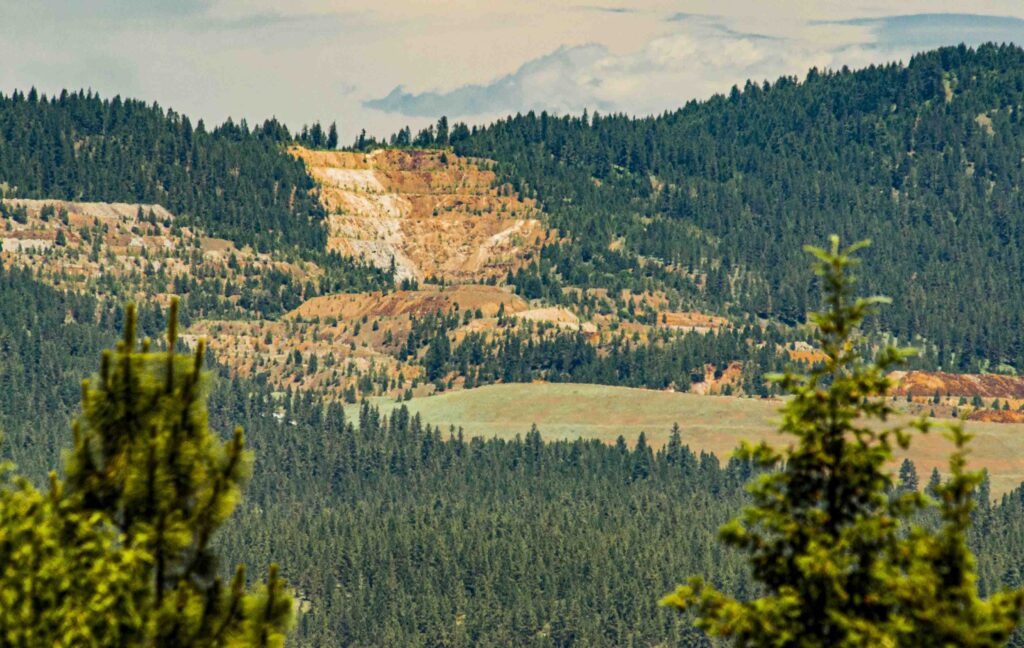
Apparently, the motel guest responded, “No, there won’t be a Superfund cleanup here. It’s too big. We can do 5 or 6 Superfund cleanups for the cost of doing just this one. It’s not a uranium problem, as much as it is the heavy metals. They just scraped the top off the mountain, leaving the heavy metals that now flow down into the Spokane River and the Columbia.”
The motel owner finished his story telling me that was all he knew, except I wasn’t allowed to say anything if I went to Porcupine Bay. He said if I went there and looked up, I’d see Midnight Mine. I did that yesterday. He also said, “Check out our guestbook because it says after those folks’ name, “No nukes, no nukes, no nuclear energy!” However, when I checked out the next day, the guestbook was gone. It seems it was taken away. I’ve wondered what of his story is true…. What do you know about Midnight Mine, Don?
DAN AUDET I know quite a bit. Currently, I’m in charge of Department of Interior activities related to cleanup and restoration issues on Lake Roosevelt – and in the Upper Columbia from Grand Coulee to the Canadian border. I coordinate 6 bureaus of the Department of Interior in response to cleanup actions, remedial investigations and any restoration activities.
Before I took this position, I worked for the U.S. Fish and Wildlife Service for about 20 years. In that role I addressed contaminant issues throughout eastern Washington and northern Idaho. There are several Superfund Sites that come into Lake Roosevelt. And yes, the Midnight Mine is a Superfund Site.
NWNL With some quick research, I learned that.
DAN AUDET In fact there is current litigation related to that Superfund Site being prepared for a hearing July 3rd in Spokane. Several primary rivers come into Lake Roosevelt, including the Colville River near Kettle Falls. While there are no Superfund Sites, there are now some cleanups along the Colville River. EPA has the lead on that. Did you see the Waneta Dam, on the Pend d’Oreille River near the Canada-US border?
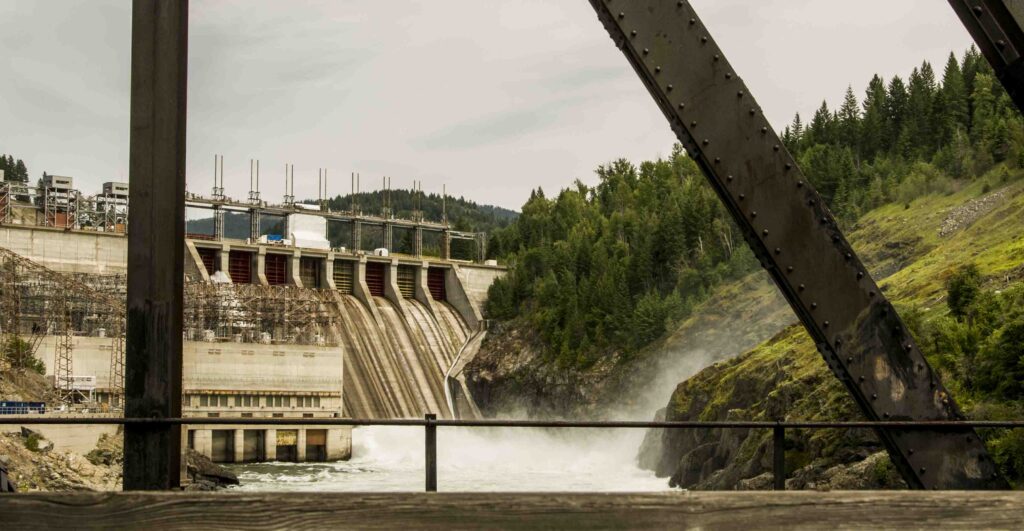
NWNL Yes, I did. They are redoing their dam powerhouse structure. I talked to a guy there about Waneta Dam and the Brilliant Dam. At Waneta Dam I saw the water coming through in white, oxygenated torrents. Apparently, they are undergoing an upgrade to settle the water, so it flows much more slowly in a controlled way.
DAN AUDET I did hear about their keeping dissolved gases down. There are also cleanup activities being considered on the Pend d’Oreille River near Metaline Falls. The EPA is involved with various companies to initiate some small and quick cleanups. The Pend d’Oreille River runs into to Lake Pend Oreille, as does the Clark Fork River. Yet, the Clark Fork has one of the largest Superfund Sites in the country.
NWNL What is that cleanup addressing?
DAN AUDET Clark Fork has one of the largest copper operations in Butte, Montana. It is interesting to see how these Superfund Sites and large cleanup activities occur upstream of Lake Roosevelt. The largest – the Spokane River – provides the ultimate drainage for Lake Coeur d’Alene and Coeur d’Alene River. It has one of the largest Superfund Sites in the country for metals: lead, zinc and other primary metals. The Coeur d’Alene Basin Superfund Site extends to the bridge at Fort Spokane and includes the entire Spokane River. Regarding Lake Roosevelt, many cleanup actions are underway, and hopefully will help improve the overall water quality of Lake Roosevelt.
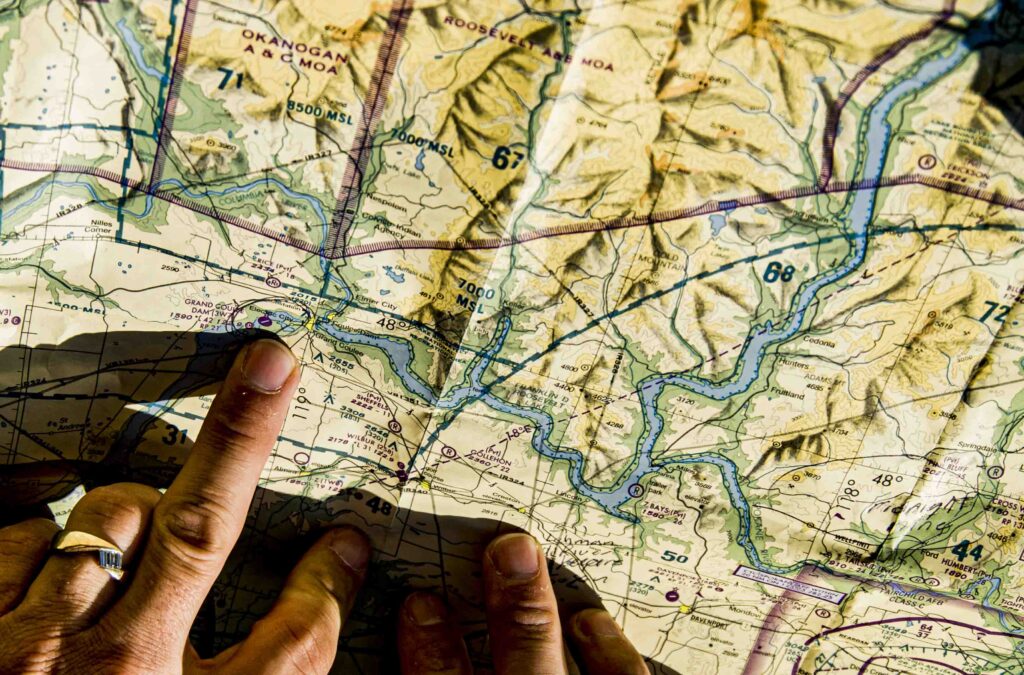
DAN AUDET The Spokane River has two drainages: Blue Creek and Chamokane Creek. They don’t even show up on the map. Blue Creek is directly across from Porcupine Bay. The Midnight Mine is here in the mountain area.
NWNL Has cleanup yet started at Midnight Mine to protect the Spokane River?
DAN AUDET Cleanup has not started. It has been disclosed as a $150 million cleanup plan. The Spokane Tribe is very involved with that, as is the Colville Fish and Wildlife Service. Midnight Mine is primarily related to uranium, but there are also associated metals which have gone downstream. The Coeur d’Alene Basin is definitely the larger source of metals affecting the Spokane River; thus, the entire Spokane River is part of that Superfund designation.
Midnight Mine is a very distinct Superfund Site. Spokane River is a separate Superfund Site, and part of Coeur d’Alene Basin. The Coeur d’Alene Basin cleanup is a 3-year-plan that will cost over $300 million, and that’s just an interim plan that won’t clean up the entire basin. There will be continual releases of metals even after that. It’s such a big issue that we can’t determine a final cleanup option until we start taking it in phases to figure out if our approach is working before spending too much money.
NWNL So all that affects the Pend d’Oreille, Colville and Spokane River. Are there were others?
DAN AUDET Yes, Kettle River comes in with contaminants from the north and there are some mine sites in Canada – but they’re not as extensive as Teck Cominco’s facility. Historic mining is also in that drainage. Despite many other sources, data now indicates that Teck is the primary polluter to the Lake Roosevelt environment.
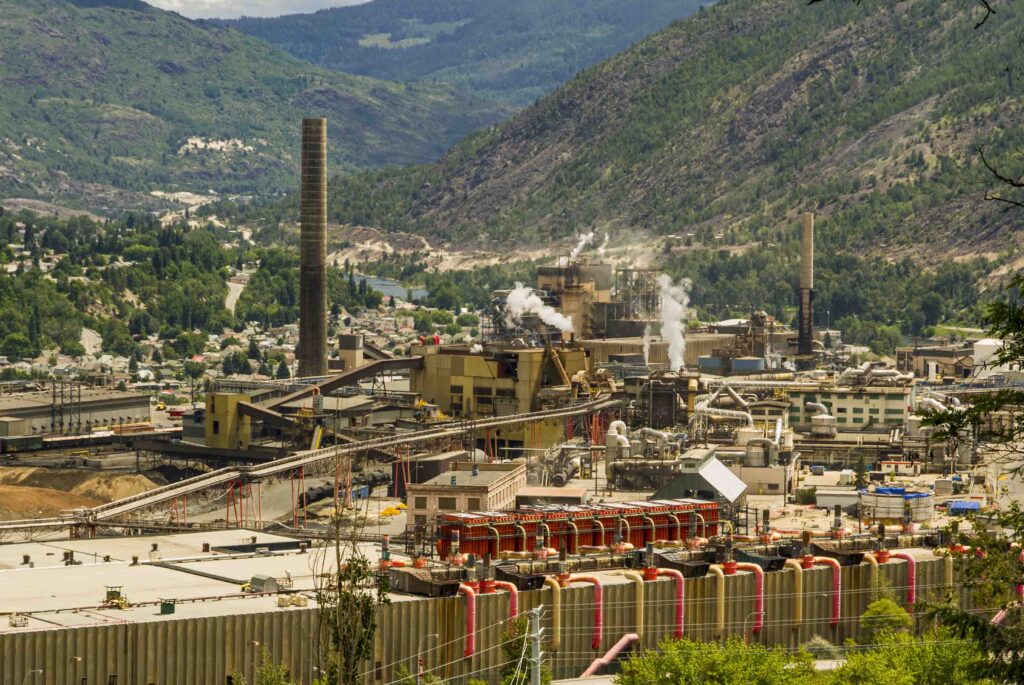
NWNL Is Teck’s pollution greater than the pollution in the Coeur d’Alene Basin?
DAN AUDET Yes. While the Spokane drainage is 30% of water coming into the Columbia River, the metals from Coeur d’Alene are much different than those from Teck.
NWNL Beyond its past legacy, what’s are are Teck’s contaminants today?
DAN AUDET Obviously, some metal discharges are coming out of Teck Cominco today. There’s a lot of information across the Northwest on lead, zinc, and copper impacts to fish and wildlife. But we are still determining aspects of specialty metals Teck certainly produces. There’s not much information on those discharges, their byproducts or impacts including indium and germanium.
NWNL I interviewed Teck’s PR representatives Bill Duncan and Carol Vanelli Worosz. They say Teck’s discharges are now clean and present no problem. They agree there is an issue with its legacy and are willing to help assess that situation; but they claim there no problems now that they’ve cleaned up so much and become an industry leader as far as clean discharge.
DAN AUDET I agree they improved the technologies they use. Some were from the 1930’s when the International Joint Commission pushed for cleaner technology from Teck. As of 1995, they’re not putting their slag directly into the river; but they’re still discharging metals. The remedial investigation process in the Teck settlement agreement addresses not the legacy; but instead the ongoing concerns related to Teck.
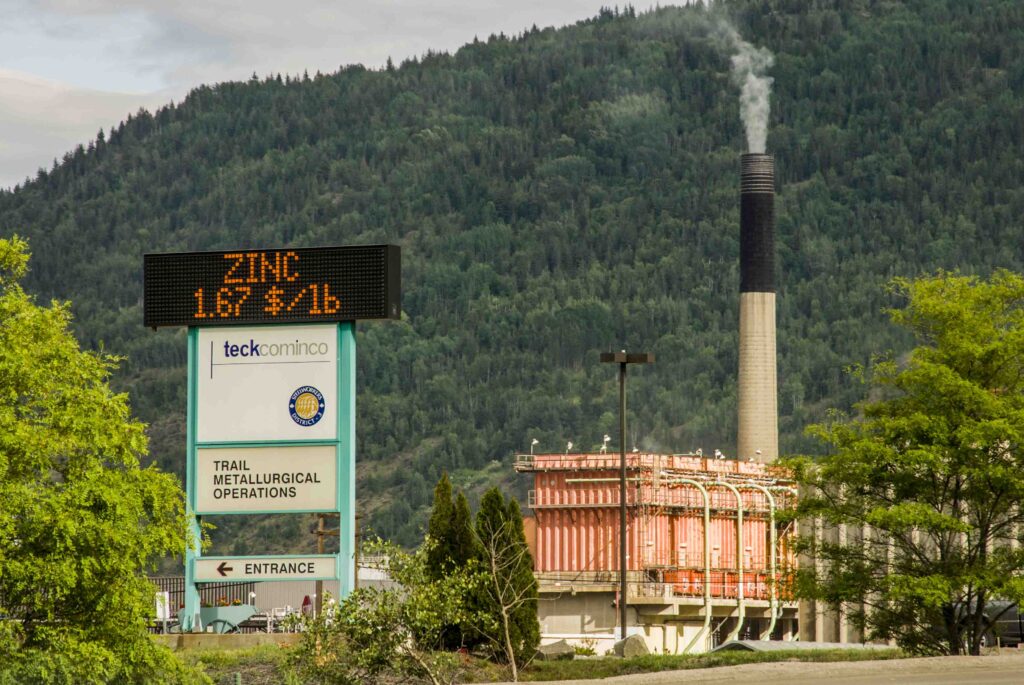
NWNL Their settlement agreement was June 2, 2006. Where do things stand now, one year later?
DAN AUDET We’re now implementing investigations and a work plan for EPA to approve for a settlement between EPA and Teck. Once that work plan is approved, investigations can occur. We’re waiting for that prior to further investigations.
NWNL What’s in the courts now?
DAN AUDET The litigation in the courts now – “Colville Tribe and State of Washington versus Teck Cominco” – is seeking to enforce an order EPA had sent to Teck to conduct a remedial investigation. While that was in the courts, a settlement agreement was reached. So, the court case continues. The 9th Circuit finding was in favor of the Tribe and the State, so Teck requested that it be heard by the US Supreme Court, which has sent out an order for the U.S. Government for our opinion on this litigation.
NWNL Opinions I heard during our 19 days in British Columbia ranged from, “We’ve cleaned up our act and everything’s fine” to “The U.S. has no right to come in and tell us what to do.” Other British Columbia citizens say, “It’s too bad they played that international card and didn’t respect the fact that this is a shared river, and so we should work together.” There are strong feelings on both sides in British Columbia.
DAN AUDET Fortunately there is a settlement plan which allows us to work together and address questions everyone asks, such as, “Is Lake Roosevelt contaminated? What risks occur due to those contaminants? Are the risks severe enough to warrant clean-ups?” We first need to answer those questions. Then, we can decide how to clean this up.
NWNL Does Canada have different water quality standards than the U.S.?
DAN AUDET The biggest differences are in procedures used to determine if there’s a problem, rather than concentration amounts. Another big difference is how we proceed with risk assessment and determine the severity of any problems.
NWNL Do you feel comfortable with this settlement?
DAN AUDET It allows us to proceed in a way we couldn’t a year ago. So, we look forward to investigating Lake Roosevelt. As the Dept. of Interior, we are responsible to the public, our employees and the environment to make sure things are okay. Good technical information allows our evaluations to determine the risks and cleanup necessary to prevent that risk.
NWNL In managing the Columbia River’s water quality as it flows out of Lake Roosevelt, do you find metal concentration poses the biggest management issue?
DAN AUDET Yes, because there are metals that involve sediments, contact with sediments, ingestion of sediments, and such. Those are the areas that we’re most concerned about. Based on our preliminary data, that’s what’s indicated. It’s not necessarily direct surface water contact or ingestion that we’ll evaluate.
We don’t have much data on it; but based on Coeur d’Alene, Clark Fork and other large mining sites, generally sediment is the driver. Our issue is with water transporting sediment downstream.
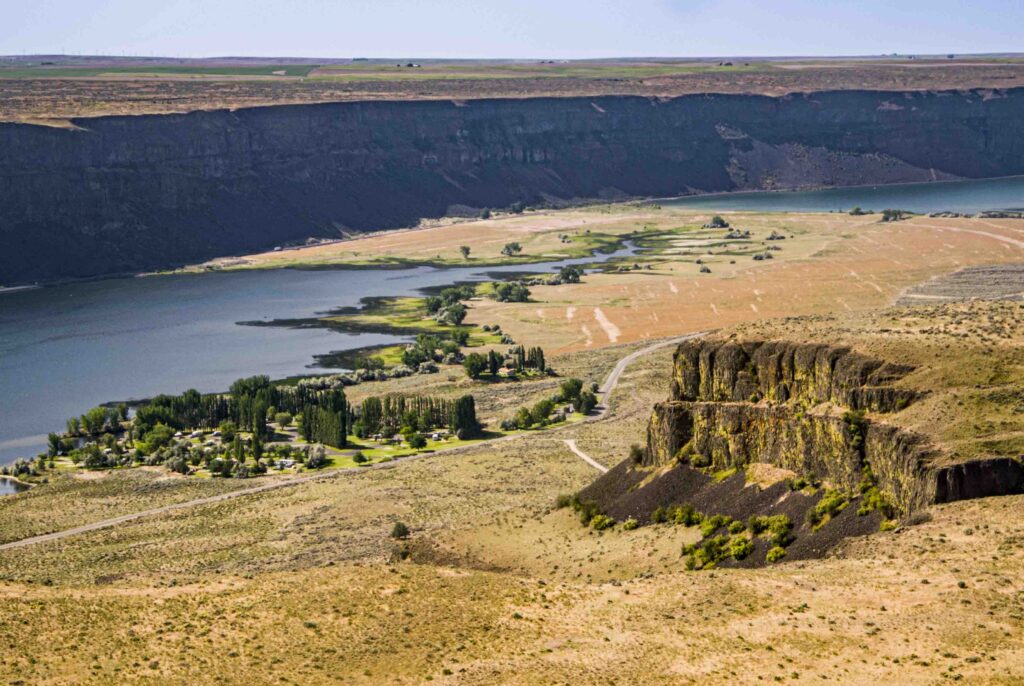
NWNL Having just left British Columbia’s high mountains and pine trees, I crossed into the US and the pines disappeared. I mused whether the 49th Parallel boundary line follows that differentiation in elevations and pine tree forests; or whether more trees and forests were cut for timber in the U.S. than in Canada. Yet when I took the ferry across to Keller Falls and the Colville Indian reservation, there were pine trees again.
DAN AUDET It’s mostly the geology of the site that you saw. You are in a major transition area. It’s fascinating that in just a few miles you can be in forest, in scablands, and then in more of a desert community. You are in a transition zone. As you continue downstream, you’ll see less and less of those pine trees and a drier Columbia basin.
NWNL Yes, I saw that distinct ecosystem differentiation while driving from Keller Falls to Grand Coulee! It’s stunning. I was also impressed by evidence of the Great Missoula Floods, which, as an Easterner I hadn’t learned about in school. Those floods, 15,000 to 13,000 years ago, were a mind-boggling phenomenon!
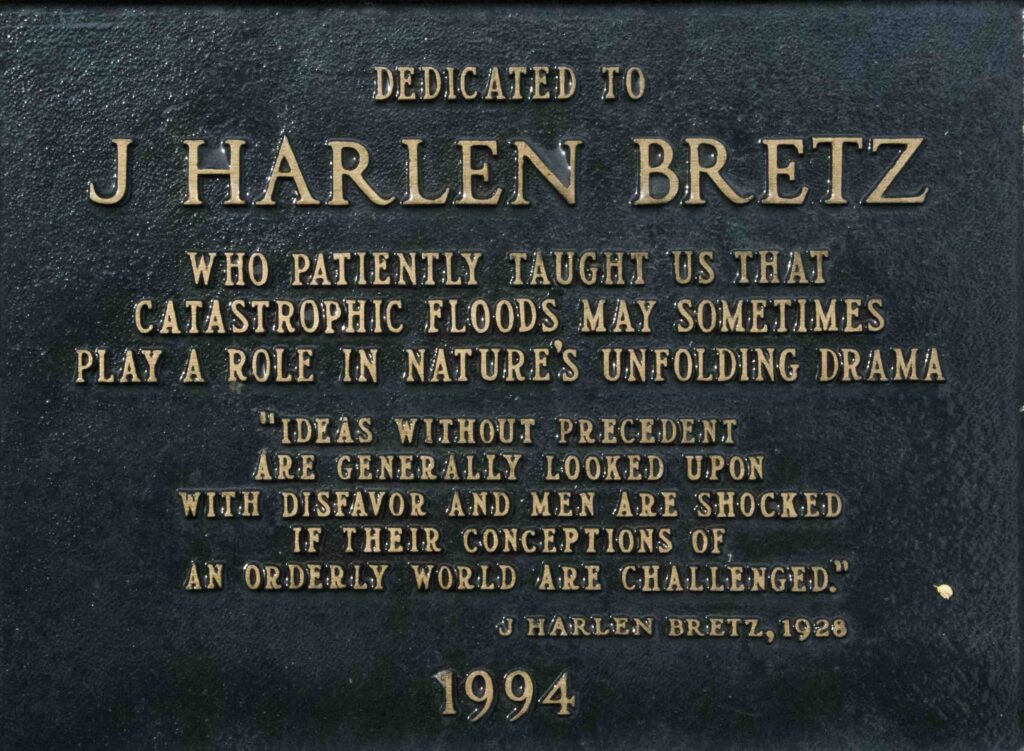
[NB: The Missoula floods that swept across Washington State in the Pleistocene Era were the result of repeated cataclysmic glacial lakes bursting their dams on the Clark Fork River. The floods crossed eastern Washington creating today’s rippled scablands and formed the Columbia River Gorge at the end of the last Ice Age. They were first understood by Geologist J Harlen Bretz in the 1920’s.]
DAN AUDET I’m a previous Easterner myself, so I too find it’s amazing that a flood that big occurred over and over for many years.
NWNL While exploring the Colville Reservation, I saw many big boulders. I suppose they were deposited during the Great Missoula Floods?
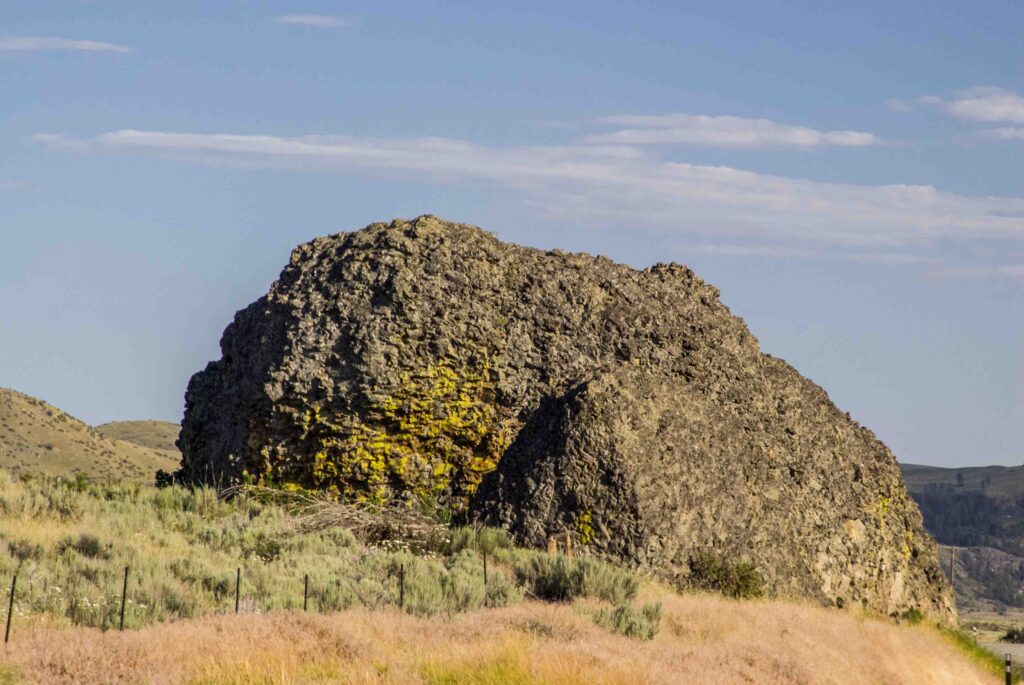
DAN AUDET It’s possible. As you go through the Basin, you’ll see large boulders from those floods, often in a wheat field. If fortunate, you might kind of see the flood waters’ rippling effect south of here. The museum explaining the Great Missoula Floods at Dry Falls indicates how those waters drove right through there. Geologists first thought that a glacier met with a river. But it was ice dams breaking again and again over long amounts of time. The Moses Lake area side roads offer another good area for exploring indications of the flood.
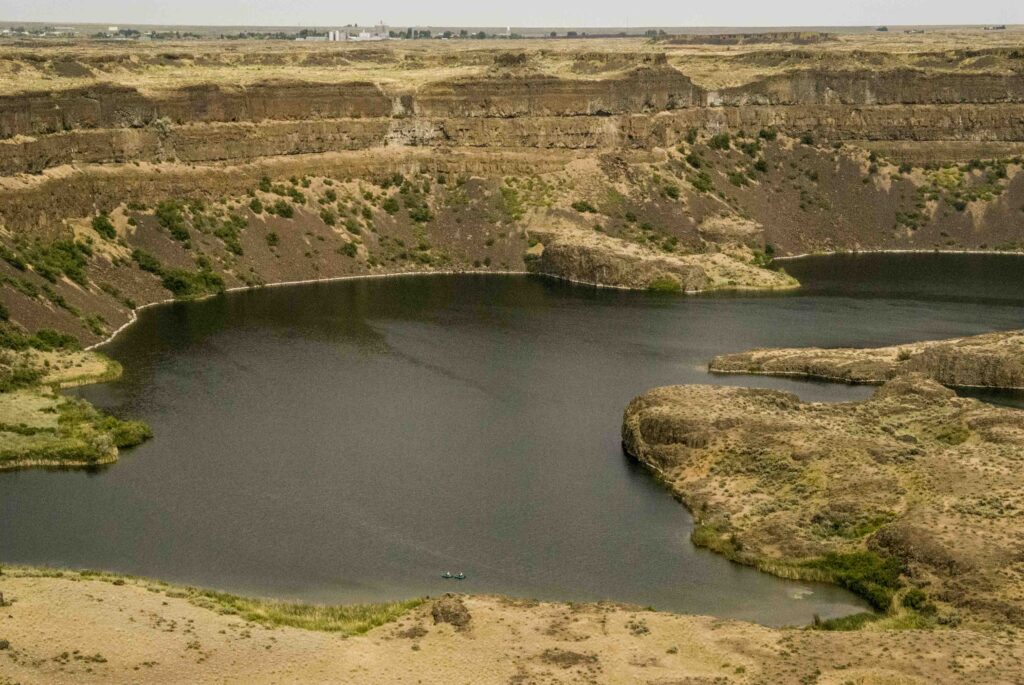
NWNL Speaking of Moses Lake, what about the Black Rock Project?
DAN AUDET For up-to-date information on that you should talk to the Bureau of Reclamation. It has offices in Moses Lake or Yakima. U.S. Fish and Wildlife Services in Spokane also works on that project with Reclamation. It’s one of many Columbia River storage projects being considered for increased water storage to allow managers more flexibility in deciding fish-flows, irrigation, and many different uses for the Columbia.
NWNL I’ve understood the storage was mostly for agricultural irrigation and to be taken over to the Yakima region.
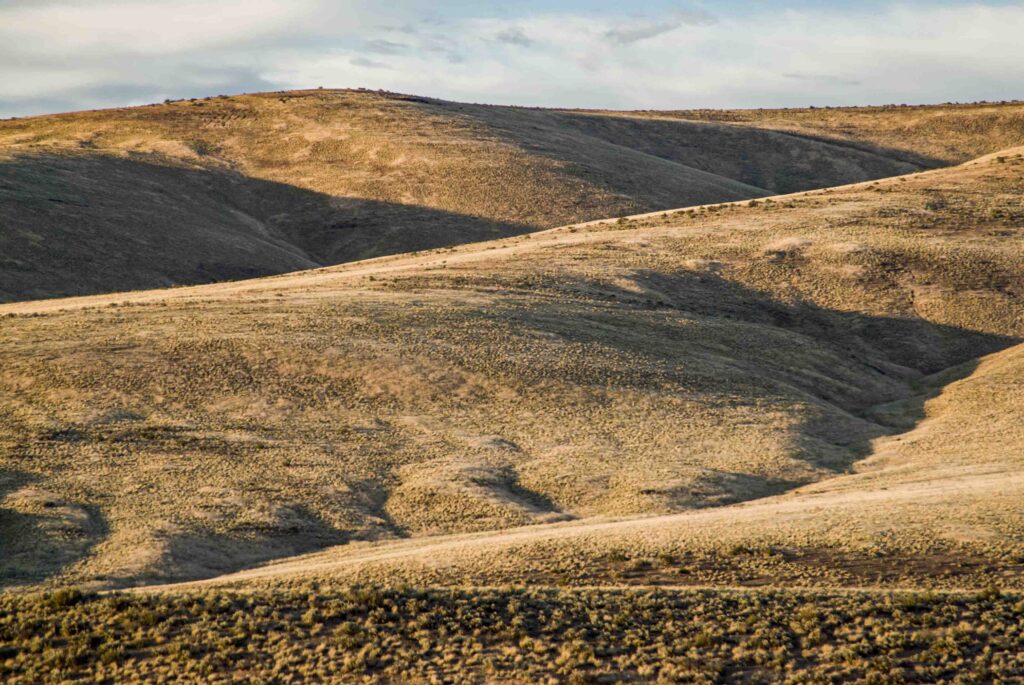
DAN AUDET Yes. Black Rock Project is specific to the Yakima drainage, but there are several projects the State of Washington is running through The Columbia River Initiative. Three reservoirs are proposed for the Upper Columbia above Grand Coulee. Hawk Creek is one area being considered for a storage area. Other areas are being considered, regarding how much water they can store and what environmental impacts they might create.
NWNL Amy Kobal, who heads American Rivers, sent me papers indicating Lower Crab Creek is a likely consideration.
DAN AUDET From reading the papers, it appears that is one of the most preferred sites.
NWNL I started this expedition in the Columbia’s headwaters in British Columbia where there are no salmon now that come up from the Pacific. They only have the Kokanee land-locked salmon. Many in B.C. want to get the salmon back, but is that even technologically possible? Getting salmon through Chief Joseph and Grand Coulee Dams is the first hurdle, but is that technologically possible? Is the expense prohibitive? And also, have climate and water temperatures increased so much that the headwaters can no longer sustain even today’s salmon populations?
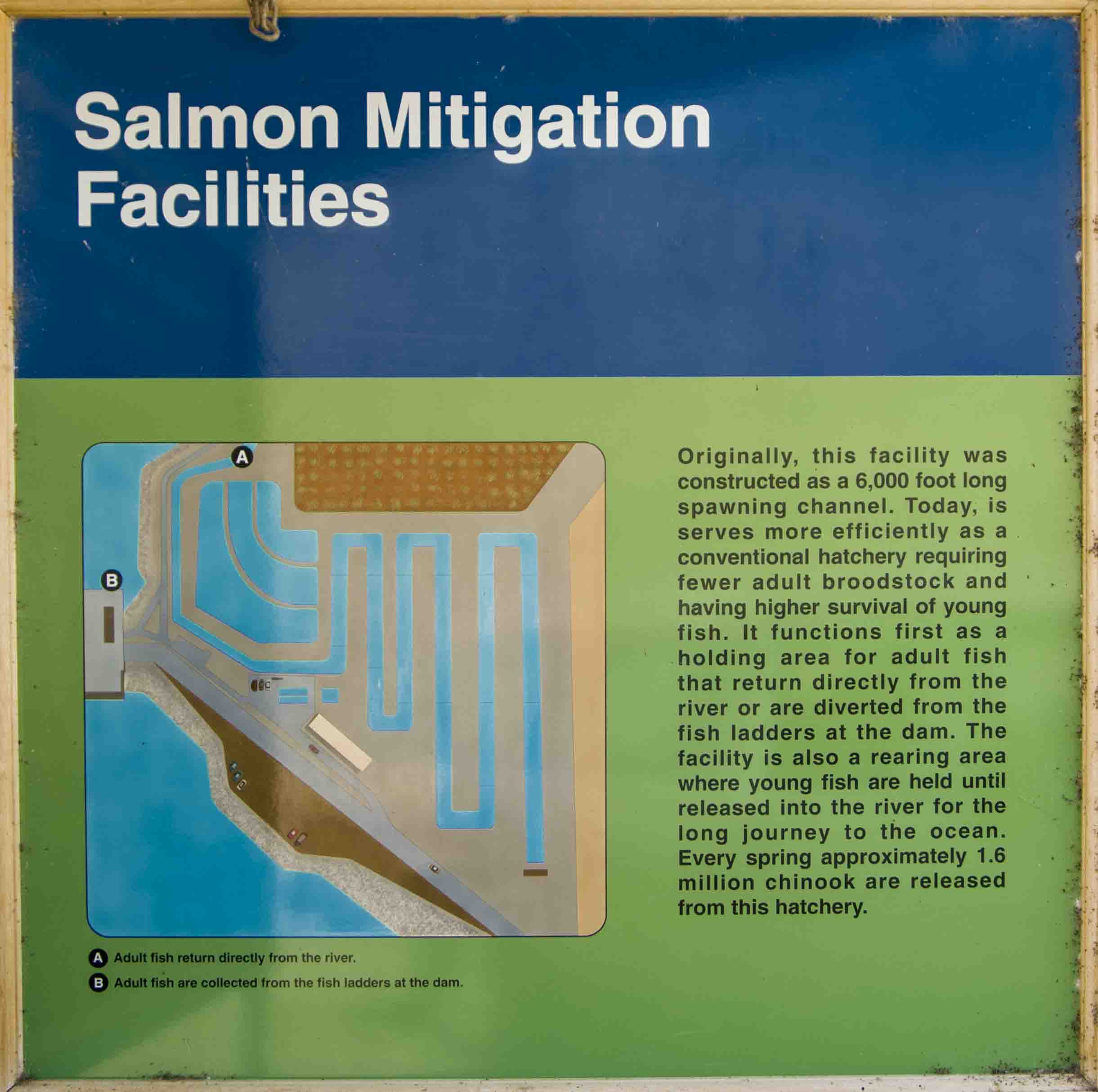
DAN AUDET My background is in contaminants and biology, so I can’t answer your engineering questions. Certainly, such adjustments would be challenging at best.
NWNL Then, staying within your field of expertise, are the contaminants so intense that these salmon would not be able to survive?
DAN AUDET We see contaminant issues across the entire Columbia system – whether it’s the Upper Columbia, the Hanford reach, the Lower Columbia with its pulp mills or Portland Harbor. They all have major contributors of contaminants. To date, data has shown that salmon, like any other fish, can be impacted by these contaminants. Endocrine disruption, accumulation of metals, or any number of things can be a problem. So, I don’t think contaminants in the Upper Columbia prohibit supporting salmon there. They face contaminant challenges along their entire path up the Columbia River, and into its Snake River tributary.
NWNL Also, the local white sturgeon that can’t get past Waneta Dam?
DAN AUDET Right. They would have to pass by Waneta to go into the Pend Oreille River. Keenleyside Dam would be their barrier on the Columbia. But we do have a population that occurs between Grand Coulee and Keenleyside.
NWNL What will happen to that population? I hear they are on the critical list.
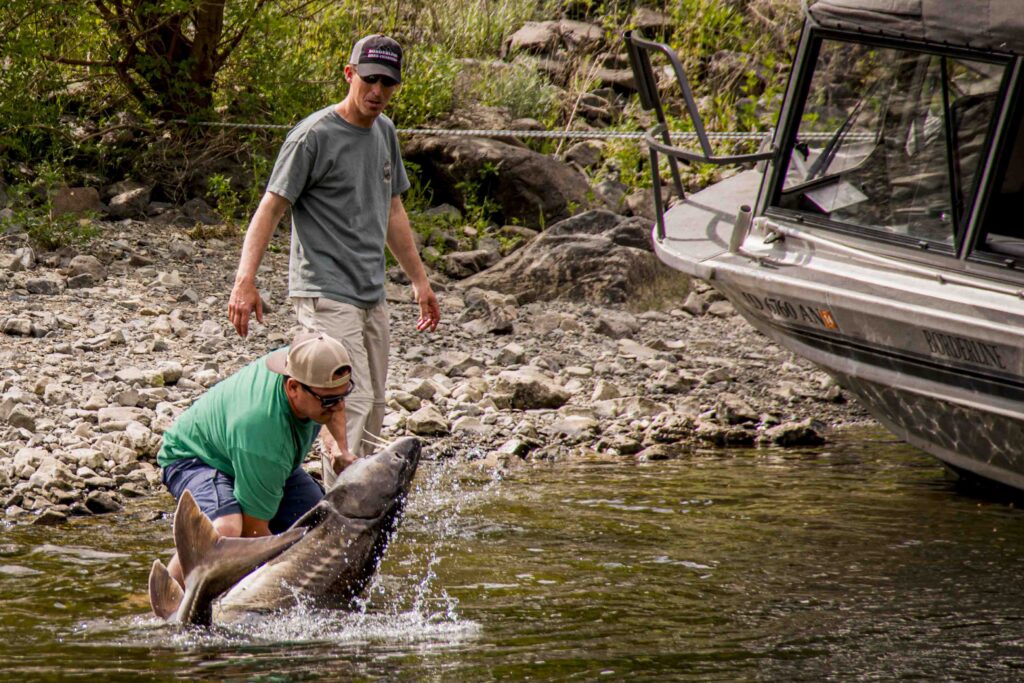
DAN AUDET They are on the list in Canada and Washington State – but not Oregon – and federally listed in the US. There is a Canadian/U.S. recovery team and an initiative to address recovery issues for this species. Their ultimate goal is to get this species back to a point where people can fish for it and actually eat sturgeon again. One of the issues that team is concerned with is contaminants. There is a definite problem with young sturgeon surviving long enough to live to a reproductive age. We mostly have older fish and very, very young fish – that is a problem. I think that with remedial investigation studies, sturgeon will be high priority. Participating parties have identified the need to address contaminants causing that reproductive gap in the sturgeon life cycle.
NWNL Have you identified indicators of what the loss of salmon north of Chief Joseph Dam means to the environment, such as the consequences of losing salmon nutrients for the ecosystem and their protein for wildlife?
DAN AUDET Those environments changed dramatically when salmon were here. So there’ll be changes, but we expect changes in our reservoir system whether salmon are here or not.
NWNL I know that Teck Cominco set up a fertilizer plant to help make up for the damage they caused to salmon populations. At least, that’s how they explained it to me….
DAN AUDET Many mine sites do that for profit. If you have a smelter, there are nutrients for creating fertilizer which can extend your profits.
NWNL Can fertilization restore nutrients to a degraded ecosystem?
DAN AUDET It depends. That theory is being tried out in various watersheds. In the Kootenay River system, they are adding nutrients to see if that will kickstart productivity. But we must be very cautious, since nutrients can get out of control and cause adverse impacts the other way. On a system like this, I don’t know.
NWNL Will that be part of your assessment?
DAN AUDET No. Under the U.S. definition our remedial investigation deals with hazardous waste. Nutrients are not necessarily hazardous at this site. Metals, dioxins, furans and PCB’s are the contaminants we focus on.
NWNL What solutions will you use once you assess what’s there? What methods are available? Teck Cominco said that in the past they contributed slag and metals into the Columbia River, but that now it is best to allow them to stay there and be naturally covered with healthy sediment.
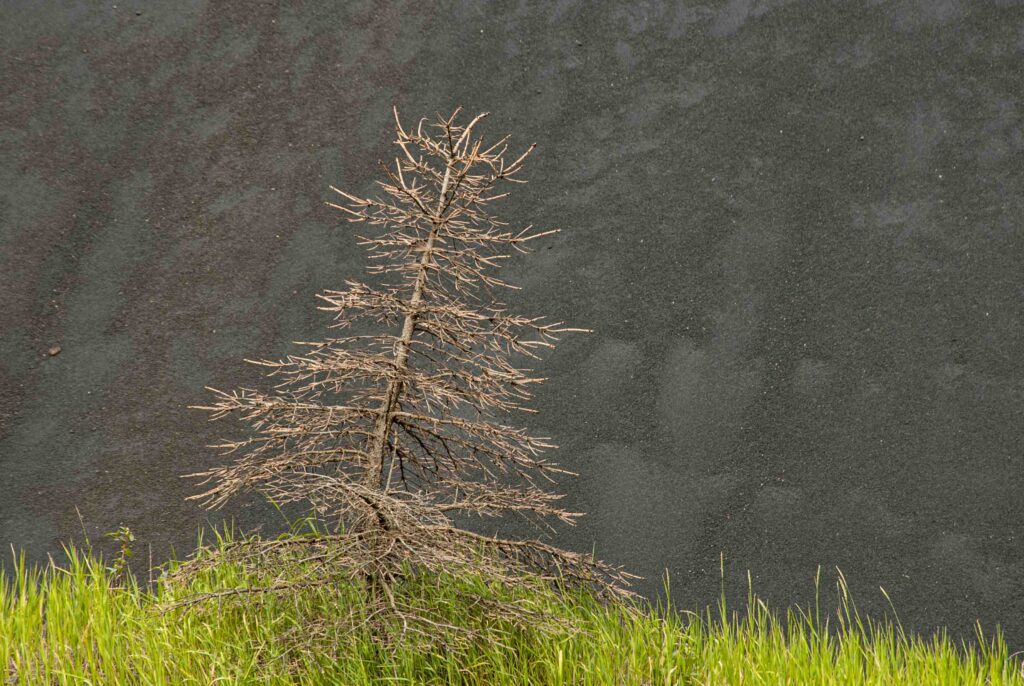
DAN AUDET We can’t predict the best technology until we know what the risks are. There are several options. If there’s very little risk to the environment, nothing needs to be done. But if severe risk is found, we may need substantial remediation and material removal. If isolated, we might just contain and cover those contaminate materials, or allow natural attenuation with the system itself naturally covering contaminated sources.
There are many options. Making decisions now is premature. Investigations are needed to indicate and evaluate risks to the environment and human health. Then we can sort through alternatives to see which makes the most sense?
NWNL And will funding be there for what’s needed?
DAN AUDET This agreement covers the investigation to see if cleanup is necessary.
NWNL Who funds this?
DAN AUDET Teck Cominco is funding the majority of the Department of the Interior settlement agreement. We are a participating party and we review the documents. We interact with Teck, the Tribes, the State and the EPA. As the agreement plays out, we are funded $600,000 a year for our participation. The state and the tribes also are funded at a lesser level for their participation, and EPA is funded on an annual basis.
In addition, Teck pays for any investigations we conduct, but that’s where the agreement stops. It does not address actual cleanup. That will have to be dealt with outside of this agreement.
NWNL So Columbia River and Lake Roosevelt clean-up funding could fall on Teck Cominco or the federal governments – or both, perhaps with different percentages, perhaps ….?
DAN AUDET A cleanup could also include other PRP’s [Potentially Responsible Parties], named by EPA early on in investigations], associated with a site that may be responsible for some of the contaminants involved.
NWNL What about Superfund funding, or do you anticipate that would be cut back?
DAN AUDET Well, Superfund resources have been dramatically decreased for our Midnight and Coeur d’Alene sites. They were funded through Superfund, because the companies responsible for polluting those sites have yet to agree with E.P.A. that they should fund cleanup of those sites.
NWNL Who are those companies?
DAN AUDET Midnight’s closed, but still owned by Dawn Mining Company and Newmont Mining, a very large company. Both are considered responsible parties. The responsible parties for Coeur d’Alene are Heckla and Asarko. Litigation for both those sites will determine costs and who is to pay. Both sites face very large litigation issues.
NWNL I understand Superfund funding comes from taxpayers.
DAN AUDET Well, the tax that used to be on industries hasn’t been in place for a while, so the amount left in the Superfund has dwindled down quite a bit. This means less cleanup is being undertaken throughout the U.S., especially for sites like Coeur d’Alene and Midnight. They utilized the Superfund since they had no agreements with the original companies owning those sites. Still, Superfund covers some very large cleanup operations right now throughout the country.
NWNL Is Superfund cleaning up Hanford Nuclear Site downstream from here?
DAN AUDET No. That’s a Federal facility, so Superfund doesn’t cover its cleanup – the Department of Energy does.
NWNL Ah! But what about Oregon’s Portland Harbor further downstream? That is another Columbia Basin Superfund site.
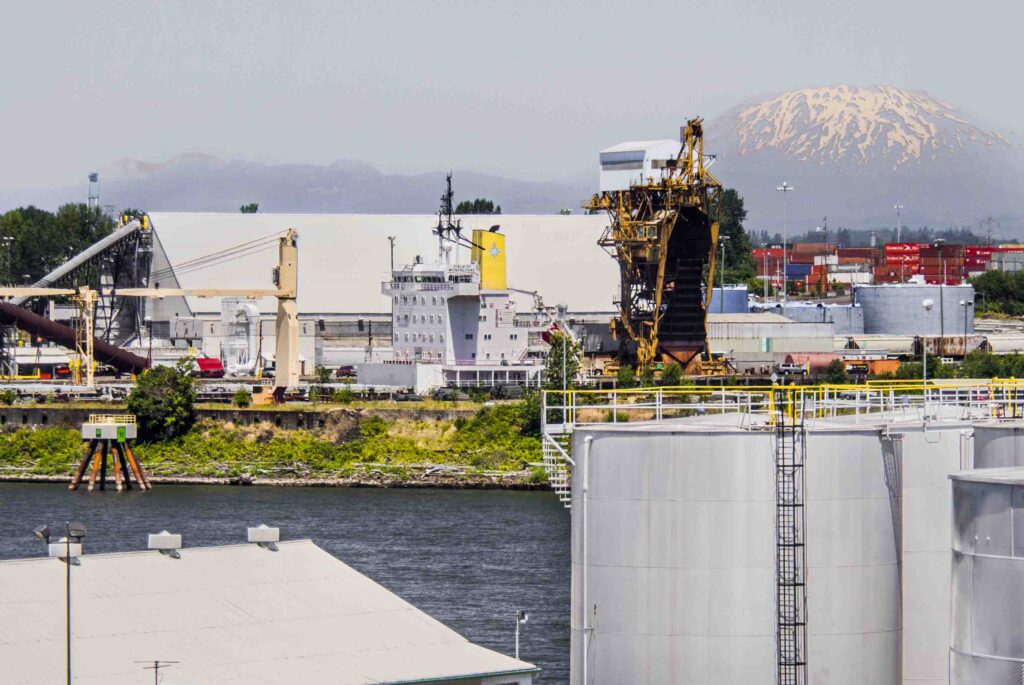
DAN AUDET Yes. There may be some agreements with cooperative responsible parties in that case; but they aren’t putting money forward for cleanup activities. That isn’t unique, but it’s unfortunate. It happens often with larger sites that have lot of cost associated with cleanup. With oil spills and such, companies generally quickly come forward to clean them up. They are short term, immediate and very much in the media. People watch those issues. But for larger sites, polluted for hundreds of years, clean-up costs can be substantial, so their companies hesitate to pay.
NWNL What is the worst-case scenario if there’s no cleanup at these polluted sites?
DAN AUDET For the Upper Columbia in the US (i.e., Grand Coulee north to the border), if assessments show there is no risk, cleanup might not be necessary.
NWNL But if your assessment states there is risk. there are no federal government funds left in Superfund’s piggy-bank. So, if the companies don’t step up, then what happens? What’s the impact on this Upper Columbia region and all the way down?
DAN AUDET Well, risks to the Columbia Basin remain. People need to be aware of that.
NWNL Advisories can be posted, but do they have an effect?
DAN AUDET Well, currently we have a fish advisory on the Upper Columbia of no more than twenty fish meals a month, I think….
NWNL Canada has no fish consumption restrictions…. How do you assess which contamination levels must exist for your signs of No swimming, No boating, No fishing, and No fish consumption?
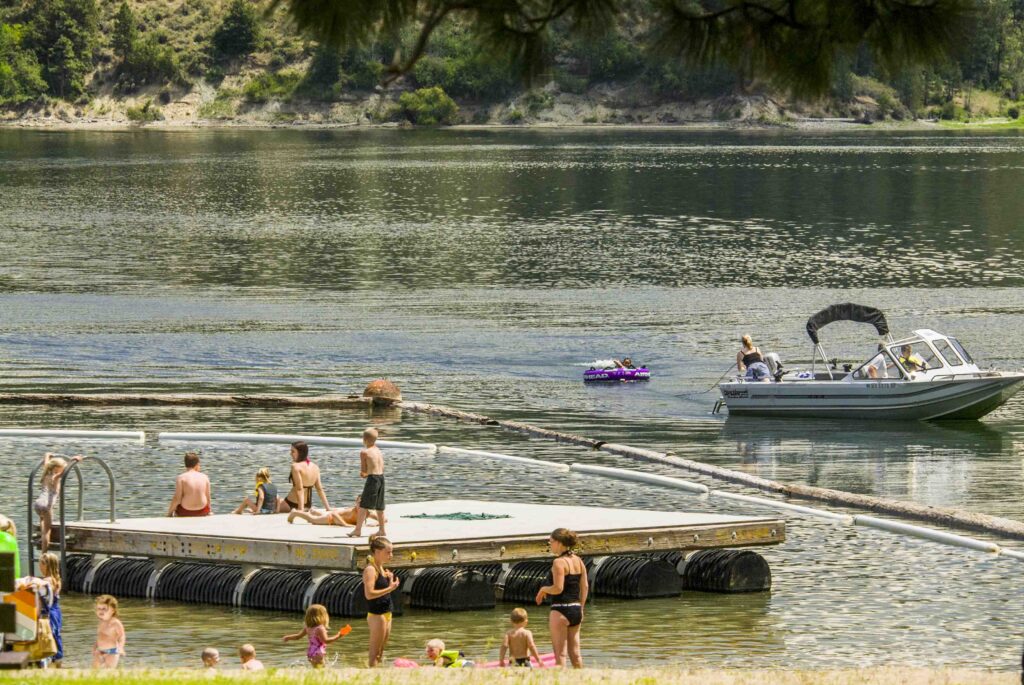
DAN AUDET Right now those activities are not precluded. The current fish advisory is based on data from 2005. Fish Advisories aren’t part of the risk assessment. Our Assessments evaluate risks to people to use as our key to determine if a cleanup necessary. Advisories share current situations with people and are the responsibility of the State of Washington Department of Health. They currently also use that 2005 data to determine any changes to an advisory. We are anxiously awaiting updated consultation on that, due anytime.
NWNL So, your assessments analyze specific contaminants at specific sites and their risks, but you don’t make fish consumption assessments. When assessing sites’ risks and possible deposits of past and present heavy metals and slag, what do you look for?
DAN AUDET I look for effects on reproduction, survival and sub-lethal effects. For instance, anything that might cause fish to be unhealthy warrants our attention. I then assess if it’s likely to continue and or be substantial enough to require cleanup action.
NWNL Do you use fish populations as criteria for determining a river’s health?
DAN AUDET That’s one criteria. We also use ecological receptors and human receptors, from tribal members to recreators, employees and residents. Ecologically, we study fish, amphibian, invertebrate and bird populations that utilize the river system. Deer, elk, and any other species that could be exposed to contaminants are also included.
Sturgeon are also part of our risk assessments. Those raised in state hatcheries can be utilized in toxicity tests for various metal concentrations. Or we can expose a sturgeon to sediments and slag in chambers to evaluate impacts on its overall health. That exposes any effects on survival, growth or reproduction. We use such evidence to evaluate whether a cleanup is required.
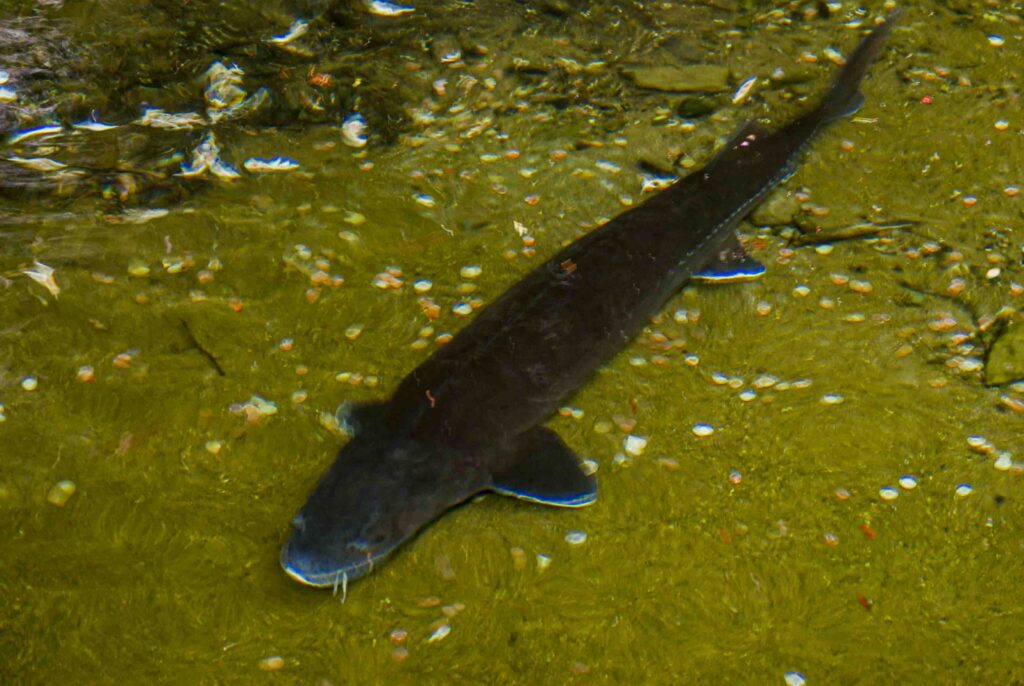
NWNL Do you study osprey, since they are fish-eating birds?
DAN AUDET Absolutely, osprey are a species to look at regarding the health of a river. Other such species include robins and song sparrows that feed directly on the shoreline and may ingest large quantities of soil or sediment contaminated from upstream releases.
NWNL Do you test humans and identify how groups consume different amounts and different parts of the fish?
DAN AUDET Yes, there is a model. Generally, we do direct measurements on the public as part of human health risk assessments. In Coeur d’Alene, we studied blood lead, because that was the primary issue. But it requires participation and acceptance by people who volunteer to be tested. That can be problematic, so generally we use a modeling based on previous investigations around the world.
NWNL I’ve talked with a Colville tribe member concerned that their fish consumption is greater than in the general population. They prepare fish differently and they eat the whole fish – head, fat, skin and all. Thus, since their fish consumption is so high, they are doing their own study. Are you aware of that?
DAN AUDET Their diet is different, and it’s well accepted that tribal fish consumption differs from that of the general public and thus requires additional information.
NWNL Is the concern mostly over the fat in fish?
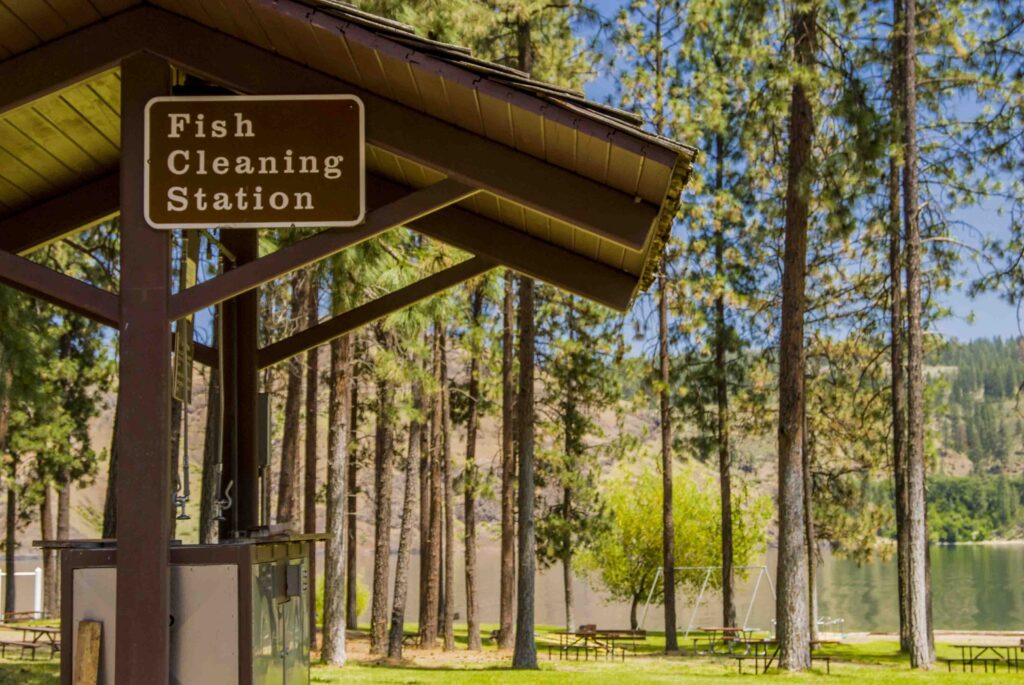
DAN AUDET It depends on the contaminant. Many metals, especially lead, concentrate in bone, which affects people who store their fish in vinegar to dissolve the bone. Generally, there’s much less lead in flesh than in bone. People who eat liver or kidney tissue are susceptible to high metal concentrations. Dioxins, furans and PCB’s target areas of fat. Each part of the fish has different concentrates of contaminants. So those who consume the whole fish increase their risks to many different contaminants.
NWNL Does Teck Cominco pay for such tribal studies under their agreement?
DAN AUDET All this is funded through the settlement agreement.
NWNL Generally, how do you assess the pluses or minuses caused by dams, i.e., the balance of positive contributions versus degradation? I hear people say “Let’s take those dams down. We want our free-flowing rivers back.” When I saw William Layman’s “River of Memory” exhibit with historic photographs of sacred and dramatic gathering sites like Kettle Falls before the dams, it’s hard not to feel upset. How do we balance those thoughts with today’s increases in populations and other environmental needs? What has been lost by damming this river and what has been gained? Where is the balance?
DAN AUDET The balance is in the public’s eye. Dams are in place, providing a number of resources: irrigation, power, flood control. Does the public want to live without that, or does the public want other things? I’d say we can mitigate these dams’ impacts on fish and such. There are processes being put in place to balance what has been lost versus what has been gained.
NWNL It would seem that today the primary need for proposed additional dams is for agricultural irrigation, rather than energy. Some dams are ramping up to utilize 100% of their turbines. What is the biggest demand for water right now?
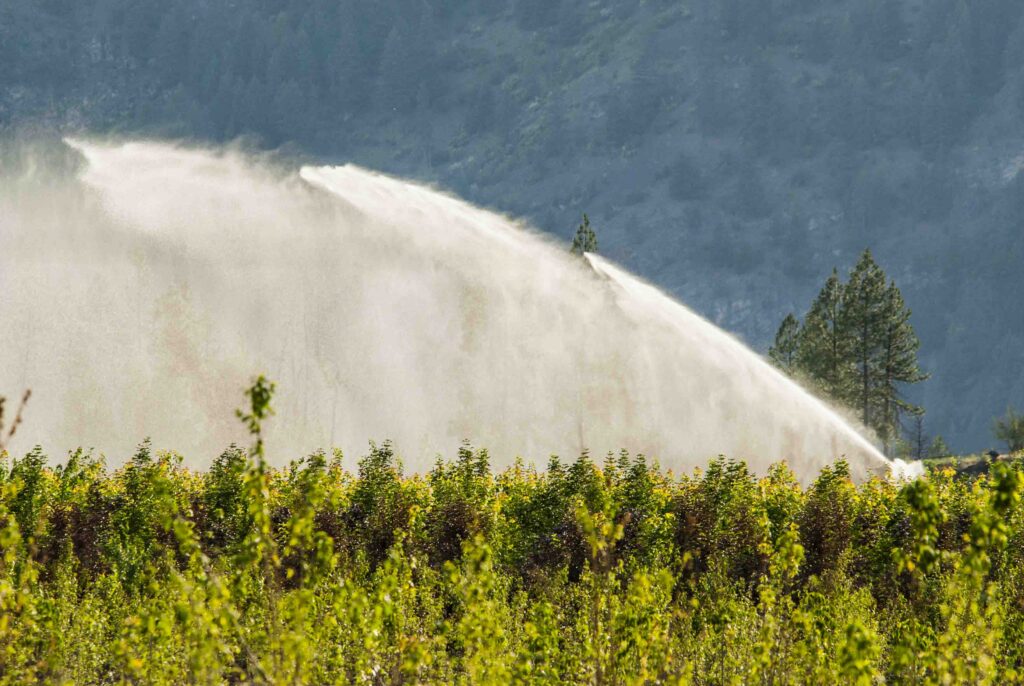
DAN AUDET Agriculture is one. Irrigation is obviously one. But also, we must have flexibility in fish flows and other current activities for which these dams are responsible. I think we must keep looking for ways to allow for the most flexibility so we don’t get stuck. We don’t know where certain things will happen or need to happen.
NWNL You come from the East. So, like myself, you must have gone through a learning curve to understand the importance of salmon to this transboundary river basin, since we don’t have anything like it on the East Coast.
DAN AUDET I grew up on the Chesapeake Bay with striped bass. It’s been great to see the recovery of their striped bass, because they were disappearing while I was there. And, yes, I’ve learned and now truly understand the value of salmon to the Northwest. Salmon are a very big part of this system.
NWNL Are there any other species around the world that you know of with an impact on an environment similar to that which salmon have had on the Pacific Northwest?
DAN AUDET I’m not aware of any. No.

NWNL I’ve asked the question again and again. One fish biologist in Castlegar suggested the carp in Asia. But he’s the only one who’s offered any comparative species.
DAN AUDET Currently, there are certain species on the East Coast – especially ocean species — that have declined to dramatic levels but were a big part of the Northeast. And salmon are not just in the Northwest. They are in other areas of the world. On “Planet Earth” last night, they discussed salmon issues around the world. In our northern hemisphere, there are many habitat locations of salmon.
NWNL Dan, it’s been an incredible experience for me to travel this river. I’d never seen one drop of the Columbia before June 2nd when I crossed into Cranbrook, Canada. I started this No Water No Life expedition in the British Columbia, first documenting Canal Flats’ wetlands and then going to their source, the Rocky Mountain glaciers. Eventually, by July 10th I hope, I’ll reach Cape Disappointment and the Pacific Ocean, just like the salmon!
DAN AUDET That’s a whirlwind.
NWNL Yes, meeting and interviewing the Columbia River’s stewards and resident, finding the watershed’s threats and photographing its values in 6 weeks is a whirlwind. So, Dan, I thank you so much for all the information you have just shared. Your comments and contacts are great help as NWNL heads downstream.
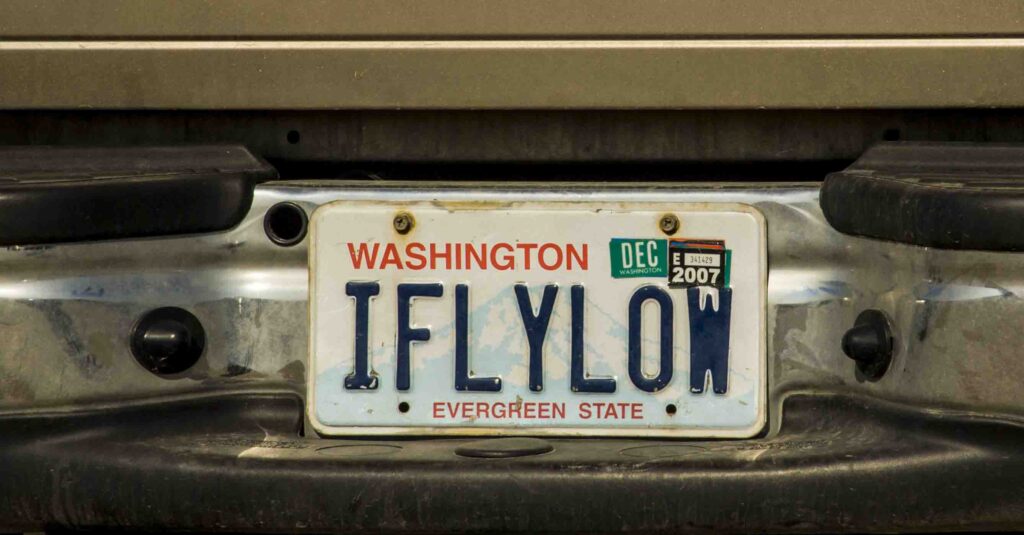
Posted by NWNL on November 19, 2023.
Transcription edited and condensed for clarity by Alison M. Jones.
All images © Alison M. Jones, unless otherwise noted. All rights reserved.
